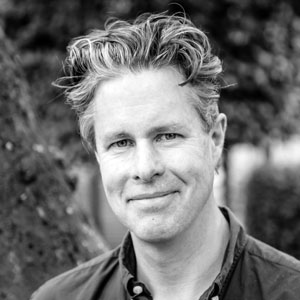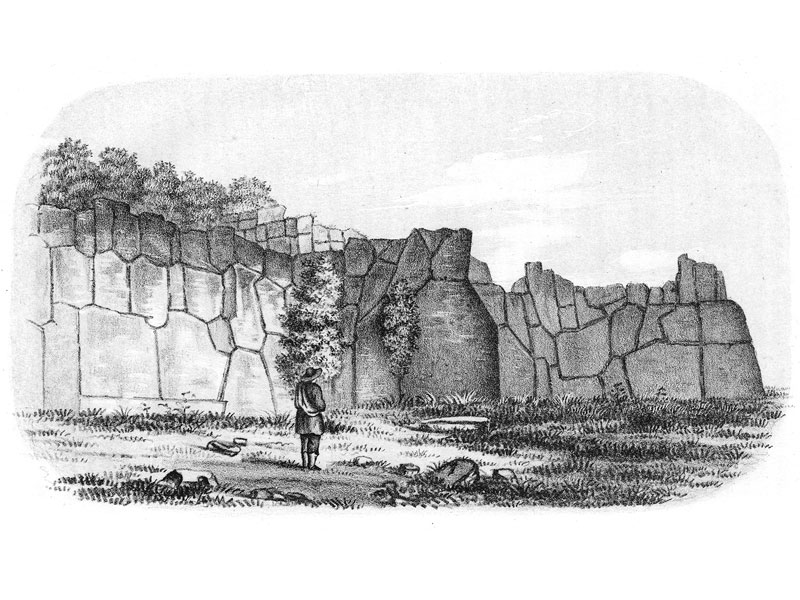Overview
Of all the world’s vanished civilisations, few evoke as much mystique as the Incas of Peru. Stumbled upon and shattered by a handful of Spanish adventurers in 1538, the Inca Empire was the last great pristine civilisation on earth – a current aside from the mainstream of human history. Tawantinsuyu (the ‘Four Realms Together’), as the Incas called their empire, had been conquered with neither pen nor sword. In many senses ‘Neolithic’, it was administered through the khipu, a record-keeping system of intricate knotted cords, born of the marvellous textile traditions intrinsic to Andean civilisation.
And yet its dominion was vast, stretching over a distance greater than from London to Moscow, along the spines of the world’s highest cordilleras outside the Himalayas and home to scores of different ethnic groups.
This tour seeks to understand and re-imagine the Inca Empire on a journey through its Andean heartland of Cuzco, following the sacred Vilcanota river. We take in classic Inca sites where their cyclopean stonework melds into the grandeurs of the Andean landscape to attain a Zen-like architectural aesthetic. The culmination is the most spectacular site of all, Machu Picchu, perched on the very fringes of Amazonia.
Yet the Incas were but the final flourish of an Andean cultural trajectory with roots many millennia deeper, a roll-call of cultures perhaps more magnificent still. So our exploration begins by the Pacific, from the excellent public and private museum collections in Lima to the vestiges of Moche and Chimor on Peru’s northern coast. And we end at Lake Titicaca, high on the vast Altiplano tablelands, and whence the Incas themselves claimed their mythical origins.
En route we have ample chance to indulge in Peru’s extraordinary cuisine, acclaimed by chefs such as Ferran Adrià as ‘key to the future of gastronomy’. As with the ancient Andean civilisations, that cuisine is founded upon native food crops originating in one of humanity’s precious few ancient hearths of agriculture. It is set amid the world’s richest and densest concentration of ecotones, from desert coast to eternal snows to tropical rainforest, and adjoining one of its richest marine resources. Indeed, it is this that connotes the real importance of the Andes to our wider human story.
Day 1
Travelling day. Flights from London are not included - see Practicalities. We recommend Iberia Airlines from London Heathrow, via Madrid at c. 7.55am, arriving in Lima at 6.20pm. You may check in to the hotel from 3.00pm. The tour begins on day 2 with a talk in the hotel at 9.00am. First of two nights in Lima.
Day 2
Lima. After an introductory lecture in the hotel, visit the Larco Herrera Museum with its famous collection of Moche and other pre-Inca ceramics. In the afternoon visit the Museo Amano’s collection of pre-Columbian textiles. Dinner overlooks the Huaca Pucllana, a vast adobe administrative and ceremonial centre of the Lima culture which flourished here at around 400 ad.
Day 3
Lima. Visit the heart of Colonial Lima (once the ‘City of the Kings’) to see the cathedral and the San Francisco Monastery with its Mudéjar church and important Spanish and Colonial art.
Day 4
Lima, Trujillo. Free morning in Lima before an afternoon flight north to Trujillo (LATAM Airlines). First of three nights in Trujillo.
Day 5
Trujillo. The Huaca de la Luna and Huaca del Sol the core of the ancient capital of the Moche empire. The former is adorned with superb polychrome reliefs indicative of its importance as a ritual and sacrificial centre. After lunch by the Pacific visit Chan Chan, the world’s largest adobe city and citadel of the Kingdom of Chimor for 500 years before its was destroyed by the Incas in 1470 ad. Its rich marine iconography reflects the importance of the sea to this civilisation.
Day 6
Trujillo. Drive north to El Brujo, a ceremonial centre of the Moche culture (1–700 ad) and the mausoleum of the Lady of Cao, an important priestess of that period. Her tomb is surrounded by painted relief murals, while her mummy still records the vestiges of the tattoos on her hands and legs. Return to Trujillo, a handsome colonial city with a colourful main square. Visit the Casa Urquiaga, a colonial mansion in which the ‘Liberator’ Simón Bolívar stayed after proclaiming Peru’s independence in 1824.
Day 7
The Sacred Valley. Fly to Cuzco, via Lima and on to the Sacred Valley. Here, en route to the Amazon, the Urubamba (or Vilcanota) river twists through stunning mountain scenery and terraced farmland cultivated by the Incas. Urubamba sits at 2,870m above sea level and so the afternoon is free to rest and adjust to the altitude. First of three nights in Urubamba.
Day 8
Huaypo Lagoon, Maras, Moray. Morning visit to a local community of farmers, shepherds and weavers to observe their ancestral traditions, followed by a picnic lunch at Huaypo Lagoon. In the afternoon drive to the impressive Maras salt mines, exploited since before Inca times, and on to the marvellous concentric circular agricultural terraces of Moray.
Day 9
Pisac, Ollantaytambo. Drive to the Inca citadel of Ollantaytambo, one of the last lines of resistance to the Spanish conquest, and site of elaborate water gardens amidst extraordinary cyclopean Inca stonework. Lunch is at an hacienda of one of the valley’s oldest families, with its interesting private collection of art and antiques. In the afternoon, visit the terraces and buildings of an Inca royal estate at Pisac.
Day 10
Machu Picchu. Take the morning train to Machu Picchu, a scenic journey down the valley enjoyed through panoramic windows. Have lunch and settle in to the hotel before entering the site as the crowds disperse and the light fades. Forgotten during the Spanish conquest, the temples and buildings of Machu Picchu are consequently uniquely well-preserved, which, together with its setting high above the river amidst spectacular mountain landscapes, makes the site the most extraordinary archaeological site in South America. Overnight Machu Picchu.
Day 11
Machu Picchu, Cuzco. Free morning to return to Machu Picchu, perhaps at first light, before catching an afternoon train and coach to Cuzco (c. 4 hours). First of three nights in Cuzco.
Day 12
Cuzco. The Korikancha, the most sacred precinct and centre of the Inca Empire today beneath the Dominican Monastery, still preserves the finest examples of mortar-less Inca stonework with its trapezoidal doors and windows. Visit the massive Inca fortress of Sacsayhuaman with its monumental walls built using stones up to 400 tons in weight and the Inca ceremonial site of Qenko. The Inca Museum contains some 10,000 artefacts while Cuzco Cathedral has wonderful ‘Cusqueña School’ paintings of the Colonial Period.
Day 13
Cuzco. The day is free for independent exploration. Suggestions include the pre-Columbian art museum, or an optional walk through the city with the lecturer to view the many vestiges of its Inca palaces, fine Colonial churches and bustling markets.
Day 14
Cuzco, Puno. Spend the day travelling by train from Cuzco to Puno, travelling through spectacular Andean landscapes. Lunch and afternoon tea are served. Puno stands at an altitude of 3,830m above sea level. First of two nights in Puno, on the shores of Lake Titicaca.
Day 15
Lake Titicaca. The 88,000 acres of reeds growing along the lake’s margins have been used by the Uros people for centuries to build floating islands on which they make their homes, originally to escape conquest from more powerful forces. Visit these as well as the island of Taquile, whose inhabitants still wear colourful traditional costume.
Day 16
Silustani, Lima. The spectacular chullpas, towering stone mausoleums in their beautiful location on the shores of Lake Umayo at Silustani were likely built by the Colla people, contemporaries and erstwhile opponents of the Inca. Fly in the early afternoon from Juliaca to Lima for the final night of the tour.
Day 17
Lima. Make your own arrangements for returning home. We recommend Iberia Airlines flights departing 11.40am to London Heathrow, via Madrid, arriving 18th September at 9.30am.

Dr David Beresford-Jones
Affiliated Scholar of the McDonald Institute for Archaeological Research, Cambridge University. For over two decades he has directed archaeological investigations on the south coast of Peru. He has interests in the origins of agriculture, Pre-Colombian textiles and the synthesis of archaeology and other disciplines, particularly linguistics. He is the author of The Lost Woodlands of Ancient Nasca, the co-editor of Archaeology & Language in the Andes and Rethinking the Andes-Amazonia Divide and over 60 peer-reviewed articles in international journals and books.
Price, per person
Two sharing: £8,430. Single occupancy: £9,980.
Included
4 internal flights with LATAM (Airbus 320 & 319); 3 train journeys; transport by private coach; hotel accommodation; breakfasts, 11 dinners and 10 lunches with wine or beer, water and coffee; all admissions; all tips; all taxes; the services of the lecturer, tour manager and local guides.
Flights
International flights between London and Lima are not included in the price of the tour. The recommended flight options listed here are subject to change and we will reconfirm when they are available to book in October 2024. We ask that you make your own flight reservation. The cost of an economy seat with Iberia, via Madrid, at the time of going to press is c. £900. Transfers will only be provided around the flights that we recommend.
Accommodation
Pullman Miraflores, Lima: a comfortable 5-star hotel in the Miraflores district. Costa del Sol, Trujillo Centro: 4-star colonial-style hotel in the main square. Hotel Tambo del Inka, Urubamba: 5-star hotel with an excellent restaurant. Inkaterra, Machu Picchu Pueblo: 5-star hotel in a quiet, forested area of the town, rooms are whitewashed adobe cottages. Palacio del Inka, Cuzco: 5-star hotel in a converted palace with attentive service. Casa Andina Premium, Puno: 4-star hotel with views of Lake Titicaca. Single rooms are doubles for sole use throughout.
How strenuous?
A good level of fitness is essential. Unless you enjoy entirely unimpaired mobility, cope with everyday walking and stair-climbing without difficulty and are reliably sure-footed, this tour is not for you. On archaeological sites uneven ground, irregular paving, steps and hills are standard. Much of the tour is spent at high altitude (max. 3,830m above sea level) which can exacerbate fatigue. Additional insurance is required and anyone with heart or respiratory problems should seek advice from their doctor. Average distance by coach per day: 30 miles.
Are you fit enough to join the tour?
Group size
Between 10 and 22 participants.
Travel advice
Before booking, please refer to the FCDO website to ensure you are happy with the travel advice for the destination(s) you are visiting.
Combine with
In 2025:
West Coast Architecture, 19–29 September

'The lecturer was outstanding. His lectures and comments were superb and he communicated his erudition lightly and very effectively.'
'One couldn’t possibly have done so much so easily with such good accommodation for the same cost if travelling independently.'
'The lecturer was exceptional. I found I never enjoyed lectures so much and got so quickly interested the subject.'
